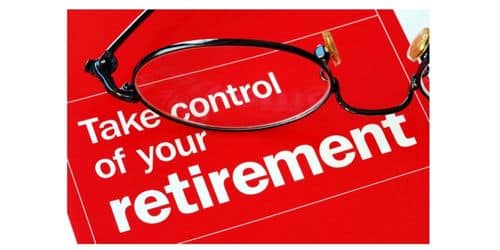It’s not such a bad idea to have plans mapped out to take care of you in your retirement stage. Yes, retirement is a stage in life every one of us must get to someday. And making financial plans against it isn’t such a bad idea. As a matter of fact, a retirement plan is one of the most important strategic plans you’ll ever have to make in your existence on earth, whether employed or self-employed. If you’re self-employed, and you’re yet to draft out such plans, this article is for you. Read on to learn about the types of retirement plans available to self-employed individuals
What is Retirement?
As mentioned above, retirement is a stage in life—a stage when one chooses to leave the workforce indefinitely. Many factors could affect the decision to retire. It could be due to health or age factors. The U.S. Senate’s Special Committee on Aging reports that Americans are living and working longer thanks to improvements in public health and medicine. The number of workers aged 55 and above is projected to rise from 35.7 million in 2023 to 42.1 million in 2026, or 16% of the workforce.
If people can stay healthy enough to take advantage of these developments, they may have more time to save. The three most common retirement savings plans are:
- Contributions to a 401(k) or other employer-sponsored retirement plan;
- Personal retirement savings;
- Social Security benefits.
That said, the age factor is what everyone, including myself, is working toward reaching. However, there are two types of retirement: early retirement and full retirement.
Early Retirement:
It is common practice to start thinking about retiring early around the age of 62, which is the earliest age at which an individual is eligible to receive retirement benefits from Social Security. People who retire earlier than normal typically receive forty percent of their pre-retirement income from Social Security.
Full Retirement:
The full retirement age, also known as the age at which an individual is eligible to receive the maximum amount of Social Security payments, is normally 67 years old for those who were born in 1960 or later. However, the payments received from Social Security are decreased for individuals who retire before the full retirement age.
What are Self-Employed Retirement Plans?
Self-employed retirement plans offer tax breaks to self-employed individuals, incentivizing them to save and invest for a reasonable standard of life after retirement
In other words, it allows people to accumulate wealth while potentially reducing their current tax bills.
Read Also: What Is Strategic Financial Management?- Functions and Importance
How Do You Choose the Best Retirement Plan for Yourself?
There are a number of considerations to make when deciding among the types of self-employed retirement plans that are best for you. Think about the following issues before committing to a plan:
- What is your annual retirement savings goal?
- How much of your annual income can you put away in savings?
- What is your budget for the management of your retirement plan?
Let’s now look at the best retirement plans for self-employed
Best Retirement Plans for Self-Employed.
How do you explain to your kids that you were once a successful and self-employed young man or woman but didn’t have retirement plans? More importantly, how do you balance the realities of being self-employed: successfully starting and running a business on your own, and not making plans for retirement? Trust me, you do not want to look to your kids and grandchildren for financial support and care after you must have chosen to leave the workforce indefinitely.
Below are the retirement plans for self-employed individuals you might want to consider:
- Traditional or Roth IRA
- Solo 401(k)
- SEP IRA
- SIMPLE IRA
#1. IRA {Traditional or Roth IRA}
People who are self-employed and want to start saving for retirement may find that opening an individual retirement account (IRA) is the easiest method to do so. You are not required to comply with any additional filing requirements, and you are free to utilize it regardless of whether or not you have any workers.
There are two types of individual retirement accounts: the traditional IRA, which provides a tax credit on contributions made during the working years, and the Roth IRA, which provides tax-free income during retirement. Contributions to an individual retirement account (IRA) are not counted as a company expense, despite the fact that they can help lower your overall tax burden.
- Contribution limit
Individuals will be permitted to contribute up to $6,500 to their IRAs in 2023, with catch-up contributions of an extra $1,000 available to those who are at least 50 years old.
- IRA Advantage
Easy to set up and has a variety of interesting investment options
- Tax Advantage
Traditional IRA payments are eligible for a tax deduction, while Roth IRA donations are not, but withdrawals taken during retirement are not subject to income tax.
- IRA Drawback
IRAs have lower contribution limitations when compared to other retirement choices available to self-employed individuals. If you and your spouse file a combined tax return and are both covered by another retirement plan, your eligibility for certain tax deductions may be restricted. Income is also taken into consideration when determining eligibility for a Roth IRA. If you take money out of your conventional IRA before you turn 59 and a half, you will be subject to a 10% early withdrawal penalty (with a few exceptions).
#2. SEP IRA {Simplified Employee Pension}
The SEP IRA is an alternative to the regular IRA that allows for more contributions and the same tax advantages. When compared to a traditional IRA, this one is just as simple to open and just as adaptable for persons in the freelance economy.
This pension scheme is ideal for sole traders and small business owners with few staff. As an employee, you are entitled to a portion of your employer’s required contributions. To clarify, if you decide to put in 10% of your own pay, you’ll also have to put in 10% of the pay of all of your eligible employees.
- Contribution Limits:
Limits on contributions are set at the lower of $66,000 in 2023 (which used to be $61,000 in 2022) or up to 25% of compensation or net self-employment earnings, with a restriction on the remuneration of $330,000 (or $305,000 in 2022). Again, if you’re self-employed, your SEP contribution and half of your self-employment taxes will reduce your net profit. There will be no late payments.
- SEP IRA Advantage
Contributions are tax deductible up to the lesser of the limit per employee or 25% of net self-employment earnings or compensation. After retirement, distributions are treated as income and subject to taxes. SEP IRAs are also non-exclusive with respect to other IRA accounts. In other words, you can continue to contribute to other IRAs up to the maximum contribution limitations.
- SEP IRA Drawback
Income-based SEP IRA contribution limits mean that the amount you can set up for retirement each year may change. Money in a SEP IRA cannot be withdrawn before the account holder reaches age 59, with a couple of other exceptions. Withdrawing funds before the specified age would result in a 10% penalty, among other things.
Who is SEP IRA Good For?
To clarify, the SEP IRA is an excellent retirement plan option for workers who also own their own businesses or are self-employed. It gives those who own businesses or are self-employed the opportunity to defer up to 66,000 USD in annual taxes.
Is a SEP IRA Better Than a Roth IRA?
When deciding between a SEP IRA and a Roth IRA, one of the most important considerations to take into account is whether or not you want to assist your employees in their retirement plans by contributing money to their individual retirement accounts (IRAs).
If you have workers under your payroll, you should think about instituting a SEP plan that includes SEP IRAs for both you and your employees. The costs associated with the establishment and operation of a SEP plan with employees are higher than these costs associated with a Roth IRA; nonetheless, providing employees with funds for retirement can be a significant incentive for attracting new workers.
On the other hand, if you are the only proprietor of your company, you have the option of opening either a SEP or a Roth individual retirement account for yourself. You also have the option of contributing up to the contribution limits to both a pre-tax SEP IRA and an after-tax Roth IRA simultaneously.
Can I Set Up an IRA for Myself?
Even if you are currently contributing to a corporate retirement plan such as a 401(k), SEP, or SIMPLE IRA, you can still open and fund a Traditional or a Roth IRA for yourself, which will help you save more money than you could in your plan at work alone. Yes, this is something that you can do.
#3. SIMPLE IRA {Savings Incentive Match Plan for Employees}
Recommended for corporations with 101+ workers. If you are self-employed or the owner of a small firm with 100 or fewer employees, you may be eligible for a Simplified Employee Pension (SIMPLE) IRA. Compared to a standard IRA, the contribution limitations are higher, whereas SEP IRA limits are lower. An internet broker can help you set up a SIMPLE, much like a SEP IRA, however, there is more paperwork involved.
The contribution responsibility is shared with your employer, unlike a SEP IRA. The salary deduction is an option for workers who want to make a contribution. But in most cases, employers are required to put 2% or up to 3% of an employee’s salary into their account. If you go with the second option, your worker won’t have to make a payment in order to get your donation.
- Contribution limits
In 2023, those who are self-employed can put away up to $15,500, with an additional $3,500 catch-up contribution for those 50 and older. Also, employees can get either a 2% fixed contribution from their employers or a 3% matching contribution.
- SIMPLE IRA Advantage
Advantages include tax deductibility of contributions and the simplicity and low cost of administration associated with SIMPLE IRA schemes. Self-employed individuals can contribute to these retirement plans in the same ways that their employees can, doubling their potential savings.
- SIMPLE IRA Drawback
For the most part, if you already participate in another retirement plan, you are not eligible to make contributions to a SIMPLE IRA. Furthermore, for early withdrawals from a Roth IRA, the penalty is 10%, or 25% if the withdrawal is made within the first two years of participation. It’s also not possible to transfer SIMPLE IRA assets to another retirement plan in the first two years of membership.
#4. Solo 401(k)
Ideal for someone who runs their own company or is self-employed and has no other employees than their spouse. The Solo 401(k), also known as the individual 401(k), is quite similar to standard employer-sponsored 401(k) plans; however, if you have employees other than your spouse, you are not eligible to make contributions to the Solo 401(k). You have the option to save more money because you contribute to the plan in the capacity of both “employer” and “employee,” respectively.
You can get started right now by opening a solo 401(k) account with any one of the many internet brokers. Keep in mind, however, that once you have more than $250,000 in your account, you will be required to submit documentation to the Internal Revenue Service on an annual basis.
- Contribution limits
In 2023, self-employed persons can defer up to $22,500 of their salaries into a Solo 401(k), plus an additional $7,500 if they are 50 or older. Individuals, in their capacity as business owners, are eligible to contribute up to 25% of their net income earned through self-employment. Contributions for the year 2023 cannot exceed a total of $66,000, or $73,500 for individuals who are 50 or older.
- Solo 401(k) Advantage
Individuals who are self-employed have the ability to contribute to a Solo 401(k) in the same way that they would contribute to a SIMPLE plan, allowing them to contribute more money to their retirement accounts overall. Deferrals from taxes can be made by individuals, and depending on their circumstances, they can choose to either make tax-deductible deferrals or post-tax Roth deferrals.
- Solo 401(k) Drawback
The upkeep of these plans could be more difficult, and the investment opportunities might be more restricted than those offered by IRAs.
Which is Better, a Solo 401(k) or SEP?
Both the solo 401(k) and the SEP IRA enable you to save roughly the same amount of money each year; however, these plans differ in several significant ways, and you’ll need to read the fine print to determine which plan is the most suitable for your circumstances.
Although both the solo 401(k) and the SEP IRA have limits on the amount of money that can be contributed each year, the 401(k) might be the best choice for self-employed individuals. A nice feature of the solo 401(k) that isn’t available with the SEP IRA is the Roth option.
Is There a 401(k) for the Self-Employed?
There is a self-employed 401(k) known as Individual or Solo 401(k), which is a special retirement plan and savings alternative for sole proprietors with no employees except their spouse{ if they got one)
Other types of retirement plans that are best for self-employed individuals, according to the IRS, include:
- Profit-sharing plan
- Defined benefit plan
- Money purchase plan
- Koegh plan
How Do I Start a Self-Employed Retirement Plan?
You’ll need to decide where to open one of these accounts once you’ve opted to do so.
The four most typical types of retirement plans for self-employed individuals discussed in this piece are available from most internet brokers.
Each broker will guide you through the process of opening one of these accounts and will explain any paperwork you may need to file with the IRS. However, to be on the safe side, you may wish to consult with an accountant.
Final Words
In conclusion, putting money down for retirement is something you should do at any time. If you’re starting late and want to catch up, you can do so by reducing your spending and putting your savings into a retirement account. Over the course of a year, you can save hundreds of dollars by avoiding impulsive purchases and cutting back on dining out. Goodluck
Related Posts
- ROTH 401(K): Withdrawal Rules and Comparisons
- 5 Investment Ideas for College Students
- 401k Contribution Limits 2023: A Comprehensive Listing & All You Need(Updated)






